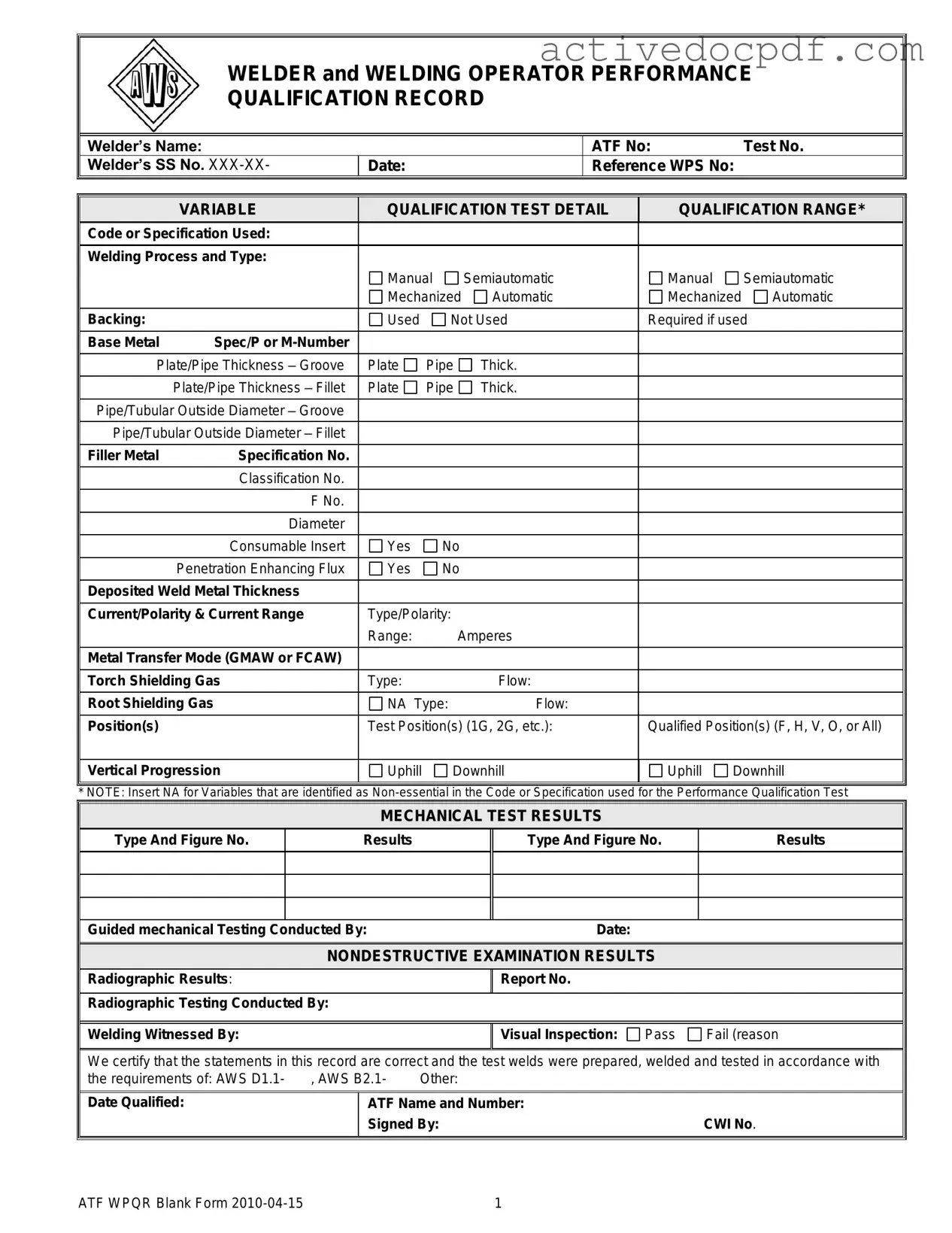The Welder Performance Qualification Record form documents a welder's qualifications and capabilities. It serves as proof that a welder has successfully completed specific tests and meets the standards set by relevant codes or specifications. This form is essential for employers and regulatory bodies to ensure that welders are skilled and capable of performing their tasks safely and effectively.
The form must be completed by certified welding inspectors or authorized personnel who oversee the qualification testing. Additionally, the welder undergoing qualification must provide personal details and sign the form to affirm the accuracy of the information. This collaboration ensures that all data reflects the welder's true capabilities.
The form requires various details, including:
-
Welder's name and identification numbers
-
Test number and date
-
Reference WPS (Welding Procedure Specification) number
-
Welding processes and types used
-
Base metal specifications and thickness
-
Filler metal specifications and classifications
-
Test positions and mechanical test results
-
Non-destructive examination results
This comprehensive information helps assess the welder's qualifications accurately.
What types of welding processes are covered?
The form covers various welding processes, including manual, semiautomatic, mechanized, and automatic welding. Each process has specific requirements and qualifications, allowing for a wide range of welding applications. The welder must indicate the processes they are qualified to perform on the form.
What is the significance of the mechanical test results?
Mechanical test results provide evidence of the quality and strength of the welds produced by the welder. These tests help determine whether the welder meets the necessary standards for performance. Results from guided mechanical testing are recorded on the form, ensuring transparency and accountability in the qualification process.
What does the non-destructive examination involve?
The non-destructive examination (NDE) assesses the integrity of the welds without causing damage. This examination may include radiographic testing and visual inspections. The results are documented on the form, providing additional verification of the weld quality. A pass or fail designation indicates whether the welds meet the specified criteria.
The validity of the qualification record may vary based on industry standards, employer policies, or specific codes. Generally, qualifications remain valid as long as the welder continues to practice their skills and does not have significant gaps in their welding experience. It is advisable to check with relevant authorities or employers for specific validity periods.
The form must be signed by the certified welding inspector (CWI) who conducted the testing, as well as the welder. The signatures affirm that the information provided is accurate and that the tests were conducted in compliance with the applicable standards. This step is crucial for the authenticity and acceptance of the qualification record.
